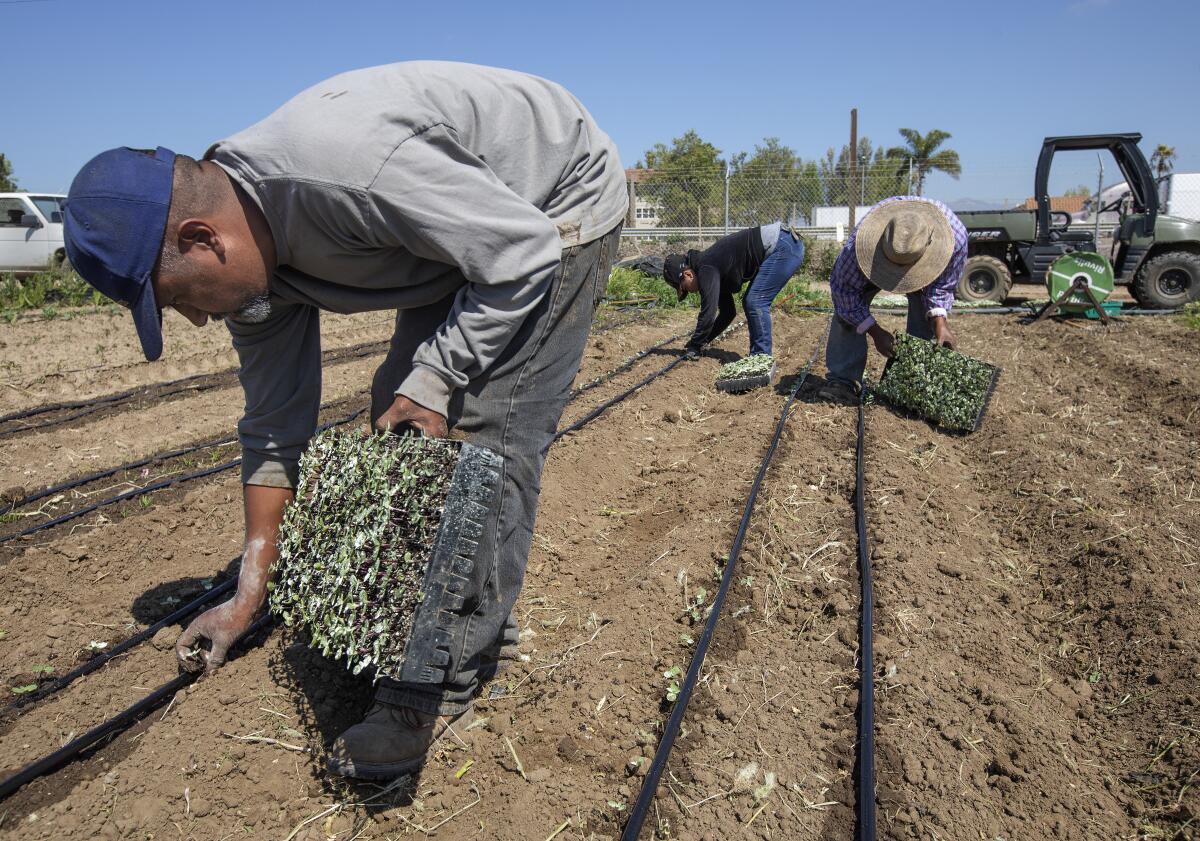Times Article Inspires Food Distribution Partnership with L.A. Regional Food Bank

- Share via
An article that appeared in the Los Angeles Times on May 5 inspired a new partnership to help get food to Angelenos in need.
Reporter Kevin Rector’s story, Rotting food. Hungry masses. Chaotic supply chains. Coronavirus upends the U.S. food system, detailed how the country’s food industry was flipped on its head by the COVID-19 pandemic. It included an interview with Chris Tang, a supply chain expert and professor at the UCLA Anderson School of Management. Tang explained that billions of dollars of food was being left to rot on California farms at the same time that area food banks were seeing demand soar.
During the coronavirus crisis, food producers, distributors and retailers in California, producer of much of the U.S. food supply, scramble to adapt.
“We have so much food being wasted,” Tang said at the time. “The question is, how do you reduce the food waste so that the food will actually get to the people in need?”
Shortly after the article published, Rector said, an executive at Salesforce, the software company headquartered in San Francisco, called him to see if he knew of a pro bono opportunity to help solve the supply chain problem. Rector connected him with Tang, and the two reached out to the L.A. Regional Food Bank and offered to build a system to efficiently distribute boxes of food — to the Food Bank and its partners, such as the Salvation Army and shelters throughout the community — that may otherwise have been wasted.
“The [Food Bank] needed an IT system to coordinate all of this because it can be very complicated,” Tang said.
The new platform traces the food from farm to recipient and accounts for important details, such as when various shelters are open for food deliveries and which organizations require kosher food.
As a result of the partnership, Tang said, in July and August alone, the Food Bank was able to distribute more than one million cases of food to its partners; each case contained multiple boxes of pre-labeled food that recipients could pick up at drive-through sites. Overall, the Food Bank has reported that their food distribution has increased by 145% compared to the pre-pandemic period.
“Fighting hunger takes everyone coming together,” said President and CEO of the L.A. Regional Food Bank Michael Flood. “Our partnership with Salesforce and UCLA, thanks in part to the story by the L.A. Times, is a great example of people and organizations coming together to help our neighbors receive the nutritious food they need.”
Tang said Rector’s article was the catalyst for the effort. “All of this occurred by happenstance,” he said. “If Kevin didn’t interview me, none of us would have connected.”
Rector, who joined The Times in late April to cover the Los Angeles Police Department, said he was excited to learn that his story had a role in the partnership.
“As a reporter, you’d like to think that whatever you write will help inform a broader conversation,” he said. “I’m happy I was able to shine a light on a problem that people had the desire to help solve.”




